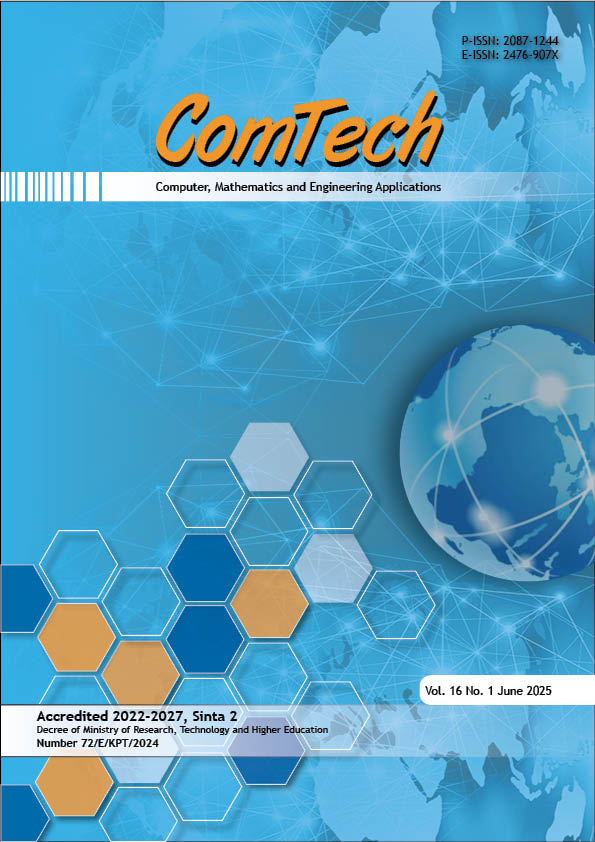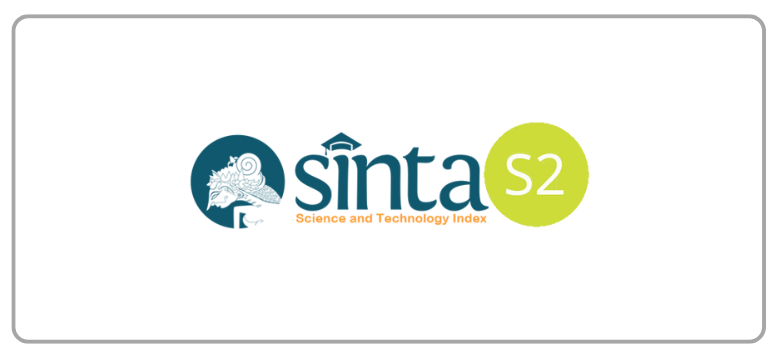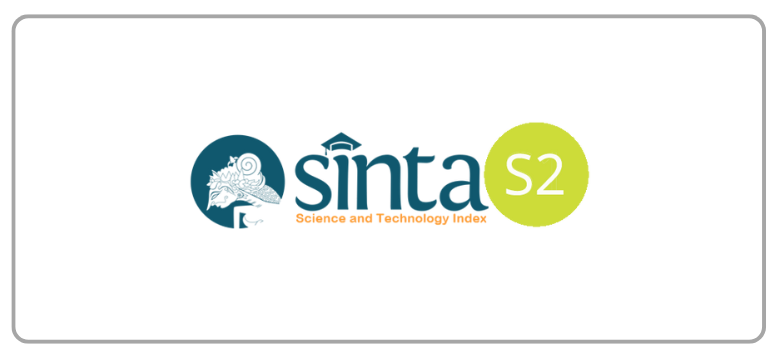Comparative Analysis of Reconciliation Techniques: Bottom-Up, Top-Down, and MinT for Product Forecasting in Retail SMEs
DOI:
https://doi.org/10.21512/comtech.v16i1.12293Keywords:
Comparative Analysis, Reconciliation Techniques, Bottom-Up, Top-Down, Minimum Trace, Product Forecasting, Retail Small and Medium Enterprises (SMEs)Abstract
Small and Medium Enterprises (SMEs) have experienced rapid growth, contributing approximately 95% to the global economy, 60% to global employment, and 50% to global GDP. This growth is accompanied by significant challenges, with approximately 70% of SMEs failing within the first three years, primarily due to poor inventory management. It emphasizes the crucial role of accurate demand forecasting for SMEs, particularly in the retail sector, where time series at various levels of hierarchical structure exhibit different scales and display diverse patterns. However, most existing research on demand forecasting for SMEs focuses on a single hierarchical level—either bottom, middle, or top—without addressing the entire hierarchy. The research sought to address this gap by forecasting across all hierarchical levels and evaluating different reconciliation techniques to generate coherent and accurate forecasts for multiple products in retail SMEs. The ETS state space model was used as the base forecasting model. This model was widely recognized as a benchmark in forecasting competitions. The reconciliation methods assessed were Bottom-Up, Top-Down based on historical proportions (average proportions), Top-Down based on forecast proportions, and Minimum Trace (MinT) (Ordinary Least Squares (OLS), OLS Non-Negative (OLS Non-Neg), Weighted Least Squares (WLS), and WLS Non-Negative (WLS Non-Neg)). The evaluation results show that the OLS Non-Negative method, with an average SMAPE value of 35.335%, produces more accurate reconciliation than other methods. In addition, this method also outperforms the base model with an increase in accuracy of 13%.
References
Anderer, M., & Li, F. (2022). Hierarchical forecasting with a top-down alignment of independent-level forecasts. International Journal of Forecasting, 38(4), 1405–1414. https://doi.org/10.1016/j.ijforecast.2021.12.015
Angulo-Baca, A., Bernal-Bazalar, M., Sotelo-Raffo, J., Raymundo-Ibañez, C., & Perez, M. (2020). Collaborative model based on ARIMA forecasting for reducing inventory costs at footwear SMEs. In Intelligent Human Systems Integration 2020 (pp. 697–703). Springer. https://doi.org/10.1007/978-3-030-39512-4_107
Athanasopoulos, G., Ahmed, R. A., & Hyndman, R. J. (2009). Hierarchical forecasts for Australian domestic tourism. International Journal of Forecasting, 25(1), 146–166. https://doi.org/10.1016/j.ijforecast.2008.07.004
Athanasopoulos, G., Hyndman, R. J., Kourentzes, N., & Panagiotelis, A. (2024). Forecast reconciliation: A review. International Journal of Forecasting, 40(2), 430–456. https://doi.org/10.1016/j.ijforecast.2023.10.010
Barrow, D., Kourentzes, N., Sandberg, R., & Niklewski, J. (2020). Automatic robust estimation for exponential smoothing: Perspectives from statistics and machine learning. Expert Systems with Applications, 160. https://doi.org/10.1016/j.eswa.2020.113637
Bayraktar, M., & Algan, N. (2019). The importance of SMEs on world economies. International Conference on Eurasian Economies, 56–61. https://doi.org/10.36880/c11.02265
Bertani, N., Satopää, V. A., & Jensen, S. T. (2021). Joint bottom-up method for probabilistic forecasting of hierarchical time series. SSRN. https://ssrn.com/abstract=3542278
Carazas, L., Barrios, M., Nuñez, V., Raymundo, C., & Dominguez, F. (2020). Management model logistic for the use of planning and inventory tools in a selling company of the automotive sector in Peru. In Advances in Manufacturing, Production Management and Process Control (pp. 299–309). https://doi.org/10.1007/978-3-030-20494-5_28
Chatzipanagioti, M. (2018). Forecasting with limited intermittent data: A methodological framework applicable to newly established firms. International Journal of Business Forecasting and Marketing Intelligence, 4(2), 154–177. https://doi.org/10.1504/IJBFMI.2018.090907
Fahrudin, T., Wisna, N., Telnoni, P. A., & Wijaya, D. R. (2022). Sales forecasting web application in small and medium enterprise. 2021 International Seminar on Machine Learning, Optimization, and Data Science, 213–218. https://doi.org/10.1109/ISMODE53584.2022.9742904
Fildes, R., Ma, S., & Kolassa, S. (2022). Retail forecasting: Research and practice. International Journal of Forecasting, 38(4), 1283–1318. https://doi.org/10.1016/j.ijforecast.2019.06.004
Hyndman, R. J., Ahmed, R. A., Athanasopoulos, G., & Shang, H. L. (2011). Optimal combination forecasts for hierarchical time series. Computational Statistics & Data Analysis, 55(9), 2579–2589. https://doi.org/10.1016/j.csda.2011.03.006
Hyndman, R. J., Koehler, A. B., Snyder, R. D., & Grose, S. (2002). A state space framework for automatic forecasting using exponential smoothing methods. International Journal of forecasting, 18(3), 439–454. https://doi.org/10.1016/S0169-2070(01)00110-8
Isnaini, W., & Sudiarso, A. (2018). Demand forecasting in Small and Medium Enterprises (SMEs) ED Aluminium Yogyakarta using causal, time series, and combined causal-time series approaches. In MATEC Web of Conferences (Vol. 204). EDP Sciences. https://doi.org/10.1051/matecconf/201820401004
Kolade, O. J. (2019). Economic development, technological change, and growth: Demand forecasting and measuring forecast accuracy in a pharmacy. Acta Universitatis Danubius. Œconomica, 15(3), 157-169.
Koutsandreas, D., Spiliotis, E., Petropoulos, F., & Assimakopoulos, V. (2022). On the selection of forecasting accuracy measures. Journal of the Operational Research Society, 73(5), 937–954. https://doi.org/10.1080/01605682.2021.1892464
Makridakis, S., Spiliotis, E., & Assimakopoulos, V. (2022). M5 accuracy competition: Results, findings, and conclusions. International Journal of Forecasting, 38(4), 1346–1364. https://doi.org/10.1016/j.ijforecast.2021.11.013
Oliveira, J. M., & Ramos, P. (2019). Assessing the performance of hierarchical forecasting methods on the retail sector. Entropy, 21(4), 1–22. https://doi.org/10.3390/e21040436
Panigrahi, S., Pattanayak, R. M., Sethy, P. K., & Behera, S. K. (2021). Forecasting of sunspot time series using a hybridization of ARIMA, ETS and SVM methods. Solar Physics, 296. https://doi.org/10.1007/s11207-020-01757-2
Pratama, D. R. C., Nur, M. K., Fuadi, M. Z., Marthen, S., & Nurdini, A. (2022). Improving production planning strategy in micro business by using forecasting and master production scheduling: Soku Bakery case study. In 5th European International Conference on Industrial Engineering and Operations Management. IEOM Society International. https://doi.org/10.46254/EU05.20220240
Purnamasari, D. I., Permadi, V. A., Saepudin, A., & Agusdin, R. P. (2023). Demand forecasting for improved inventory management in small and medium-sized businesses. Jurnal Nasional Pendidikan Teknik Informatika: JANAPATI, 12(1), 56–66. https://doi.org/10.23887/janapati.v12i1.57144
Rosenblad, A. K. (2021). Accuracy of automatic forecasting methods for univariate time series data: A case study predicting the results of the 2018 Swedish general election using decades-long data series. Communications in Statistics: Case Studies, Data Analysis and Applications, 7(3), 475–493. https://doi.org/10.1080/23737484.2021.1964407
Saleem, H., Li, Y., Ali, Z., Mehreen, A., & Mansoor, M. S. (2020). An empirical investigation on how big data analytics influence China SMEs performance: Do product and process innovation matter? Asia Pacific Business Review, 26(5), 537–562. https://doi.org/10.1080/13602381.2020.1759300
Wickramasuriya, S. L., Athanasopoulos, G., & Hyndman, R. J. (2019). Optimal forecast reconciliation for hierarchical and grouped time series through trace minimization. Journal of the American Statistical Association, 114(526), 804–819. https://doi.org/10.1080/01621459.2018.1448825
Wickramasuriya, S. L., Turlach, B. A., & Hyndman, R. J. (2020). Optimal non-negative forecast reconciliation. Statistics and Computing, 30, 1167–1182. https://doi.org/10.1007/s11222-020-09930-0
World Trade Organization. (2022). Recent evolution of developed-economy MSME participation in international trade. https://www.wto.org/english/tratop_e/msmes_e/ersd_research_note1_msmes_in_developed_economies.pdf
Downloads
Published
How to Cite
Issue
Section
License
Copyright (c) 2025 Danni Rambing, Retno Kusumaningrum, Aris Sugiharto

This work is licensed under a Creative Commons Attribution-ShareAlike 4.0 International License.
Authors who publish with this journal agree to the following terms:
a. Authors retain copyright and grant the journal right of first publication with the work simultaneously licensed under a Creative Commons Attribution License - Share Alike that allows others to share the work with an acknowledgment of the work's authorship and initial publication in this journal.
b. Authors are able to enter into separate, additional contractual arrangements for the non-exclusive distribution of the journal's published version of the work (e.g., post it to an institutional repository or publish it in a book), with an acknowledgment of its initial publication in this journal.
c. Authors are permitted and encouraged to post their work online (e.g., in institutional repositories or on their website) prior to and during the submission process, as it can lead to productive exchanges, as well as earlier and greater citation of published work.
 USER RIGHTS
 All articles published Open Access will be immediately and permanently free for everyone to read and download. We are continuously working with our author communities to select the best choice of license options, currently being defined for this journal as follows:




















